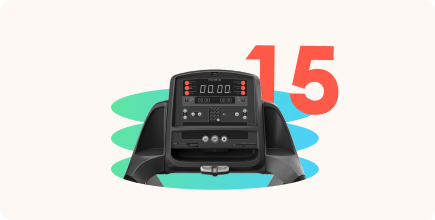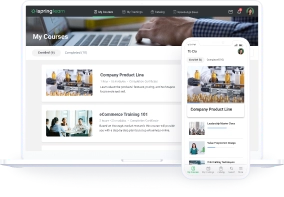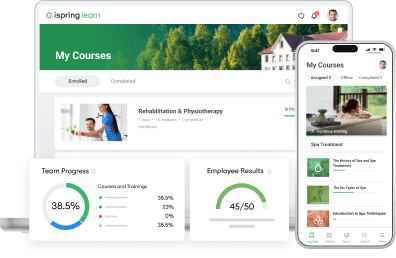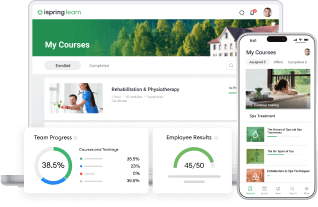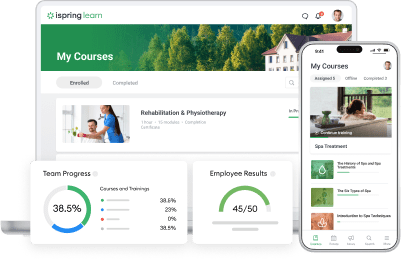Corporate Training 101: The Basics

Have you heard the Benjamin Franklin quote that “An investment in knowledge pays the best interest”? Many organizations support this idea today and consider corporate training to be an essential part of a company’s investment and growth strategy.
This article covers the basics of corporate training to help you get started and succeed.
What Is Corporate Training?
Corporate training is a system of educational activities designed to enhance employees’ knowledge and skills to drive organizational success.
Big companies usually have Learning and Development teams that handle training, while in smaller organizations, a Human Resources department takes care of it.
They’re responsible for identifying training needs, developing training programs, and engaging employees.
Advantages of Corporate Training
Let’s get straight to the point – how does corporate training contribute to business goals? Here are four areas where effective training makes a difference:
Reduced turnover
The tendency to job hop is expensive for employers. Here is the cost of replacing employees, according to Gallup 403: Leaders and managers: 200% of their salary; Technical professionals: 80% of their salary; Frontline employees: 40% of their salary.
What makes these costs particularly frustrating is that much of this turnover is preventable. According to the same report, 42% of employees who quit last year said their employer could have prevented their departure.
One key retention strategy stands out: investing in employee development. Zippia reports that 45% of employees would stay longer at a company that invested in their learning and development.
Increased efficiency
Well-designed training that meets employees’ needs drives both productivity and efficiency. Over time, these improvements will make your company more profitable. According to Zippia, comprehensive training programs can increase profit margins by 24%.
Increased motivation
Training programs help individuals, teams, and departments unite as a single organizational structure. Employees who know how their job roles support the overall mission and the company goals can make a connection between “my work” and “my company’s success.”
Building corporate culture
High-quality training does more than build skills – it actively shapes and reinforces company culture. When training programs align with corporate values and strategy, they help employees understand and embody the company’s mission. For example, a company that values innovation might include creative problem-solving workshops, while one that’s focused on customer service would emphasize empathy training.
The Goals of Corporate Training Programs
Building on these key advantages, organizations typically establish specific goals for their corporate training initiatives. The goals help translate the broad benefits we just discussed into measurable outcomes that drive business success.
Let’s examine the key training objectives that businesses typically pursue through their training programs:
1. Performance improvement
- Reduced errors and mistakes
- Improved customer satisfaction
- More leads and sales
- Strengthened leadership skills through comprehensive leadership training programs
- Improved problem-solving and conflict resolution skills
2. Risk management
- Regulatory compliance through mandatory training
- Workplace safety
- Data security
- Reduced liability
3. Employee development
- Career advancement opportunities
- Higher job satisfaction
- Increased employee retention
- Stronger succession planning
By setting clear, measurable goals in these areas, companies can create focused training programs that deliver tangible results for both the organization and its employees.
Types of Corporate Training Programs
Based on corporate training goals, companies choose specific types of corporate training programs. Here’s a list of the most common types of corporate training programs:
1. Onboarding and orientation
This kind of training is hosted right after a newly hired employee comes to the workplace and continues until they’re able to work independently. Its main aim is to streamline the new employee onboarding process – help them feel comfortable and become productive faster.
The onboarding training program is quite flexible but is typically broken down into two main parts:
- Training for all new hires. It provides general information about the organization, its history, mission, vision, and values, as well as corporate policies and regulations.
- Specific training for a particular role. This training focuses on teaching new hires the essential knowledge and skills they need for their specific position.
New Employee Onboarding 101 – Set New Hires Up for Success from Day 1 →
2. Compliance training
Compliance training is typically a formal program that is focused on company policies or rules that enable employees and employers to prevent both problems in the workplace and violations of the law.
These policies and procedures are usually job- or industry-specific. Location can also influence training requirements, determining the areas of compliance and the types of mandatory training for staff. For example, compliance training can include programs on anti-harassment, diversity, business ethics, workplace safety, data protection, and privacy.
Compliance requirements vary by job role, industry, and location. Companies create compliance training to address specific regulations and standards that apply to their business. Common compliance training topics include anti-harassment, diversity, workplace safety, data protection, and privacy.
Compliance Training: Definition, Theories, and Examples →
3. Hard skills training
Hard skills are a core of employee development because this kind of training helps employees improve the skills they need in their job roles to build expertise and become even better professionals.
For example, a graphic designer who has mastered Photoshop can go further by learning how to work in other design applications, or a programmer who is great at coding in CSS and JavaScript can undergo further training to learn how to program in Python.
4. Soft skills training
The way your employees behave is equally important to what they know – that’s why soft skills training should not be overlooked. Studies have shown that by mastering soft skills, employees can positively affect the company’s success and increase ROI.
Common training topics for soft skills relate to interpersonal relationships and involve things like communication, problem-solving, conflict resolution, and decision-making. They help employees interact effectively and harmoniously with their colleagues and customers. They’re important for attracting new clients, improving customer service, and building a solid team.
Soft Skills Training: How to Organize It in the Workplace →
5. Product and service knowledge training
Product knowledge is a skill where your team members fully understand and can confidently speak with customers about what you offer: product and service features, benefits, uses, and costs.
This training is often included in the onboarding program for new hires. It also can be useful for employees who need to refresh their knowledge on the company’s products and services and is conducted when a new feature or a new product is introduced so employees are always up to date.
New hires typically receive this training during their onboarding program. Existing employees can also benefit from refresher sessions to stay current on the company’s products and services. Additionally, when companies launch new features or products, the training team conducts update sessions to keep employees’ knowledge current.
Good product knowledge training is a sure way to improve both sales and customer satisfaction metrics in the organization.
Learn more about corporate training program types in this guide: Types of training programs.
Corporate Training Delivery Methods
Training delivery methods refer to the various ways knowledge is shared with learners. The best training method depends on factors such as training goals, budget, organizational structure, and the learners’ needs.
Here are the main delivery methods. Let’s look at how they differ and what benefits and drawbacks they each have.
1. Instructor-led classroom training (ILT)
Traditional classroom-based training is the very definition of “old school” learning. And it’s not going away anytime soon. A 2023 survey by Training magazine found that 27% of organizations use it for about a third of their overall training.
Pros
- Familiar to all participants
- Relatively easy to deliver
- Easy to customize
- Supports a variety of assessment types
- Easy to create and maintain
Cons
- Higher cost per learner than other training methods
- Requires dedicated space and trainers
- No standardized training experience
- Quality can vary depending on the instructor
- A limited number of learners per session
2. Virtual instructor-led classroom training (VILT)
VILT puts a 21st-century spin on traditional learning by moving the classroom online. VILT software allows teachers and trainers to deliver training sessions, show videos, conduct break-out sessions, lead discussions, and monitor learner job performance. Virtual sessions can be recorded and accessed for review later on.
Pros
- Eliminates the need for classroom space
- Builds on a familiar training experience
- Makes learning accessible to participants regardless of their location
- Supports a variety of activity types
- Can be recorded for review
- Less costly over time
Cons
- Users can feel disengaged
- Requires experience with technology
- Requires a dependable high-speed internet connection
- Tech glitches can leave learners out
- Instructors may need upskilling
- Higher up-front costs to create content
3. Online learning
Online learning allows employees to study remotely and at their own pace, asynchronously.
The term “online learning” encompasses:
- eLearning programs
- Interactive microlearning modules
- Adaptive learning paths powered by AI
- Virtual and augmented reality training simulations
- Mobile-first learning apps
- Gamified learning experiences
- Social learning platforms and collaborative spaces
- Video-based learning with AI-generated material
- Virtual coaching and mentoring
Based on the 2023 survey by Training magazine, online training accounted for around 32% of training hours across companies of different sizes.
Pros
- Globally scalable and accessible
- Standardizes the training experience for all participants
- Accommodates unlimited learners
- Meets learners at their point of need
- Preferred learning method by many younger professionals
Cons
- May take longer to develop than ILT
- May require an instructional designer (ID) to enhance the technology and material development process
- Bandwidth can affect access to materials used in the courses
- Lack of face-to-face interactions
- May intimidate learners who are not technologically adept
4. Blended learning
A blended learning approach combines classroom-based training and online learning into a single curriculum. Bringing these two methods together can create a training experience that encompasses the best of each method.
According to ATD’s Blended Learning: Leverage Flexibility to Maximize Results research report, “About 75 percent of report respondents indicate that the use of blended learning at their organization has increased over the past two years, and the same percentage believe that it will increase over the next two years.”
Pros
- Globally scalable and accessible
- Greater learning opportunities for student collaboration and connection
- Increased accessibility to learning
- Flexibility for participants to complete assignments
- Can increase the engagement and interest of many learners
Cons
- Is more time-consuming to create
- Requires a solid technology infrastructure
- May challenge learners who are not technologically inclined
- Trainers and IDs may need upskilling
Assess your existing training to see if you’re using the best training methods for your organization. To get a better understanding of which method is most appropriate, read our article about top workplace training delivery methods.
Why Pick Online Training
If all your training sessions are still instructor-led or you’re just looking to transition to corporate training, it’s time to try online learning. This modality proves more effective, whether used independently or as part of a blended approach. Here are some relevant points to consider:
Long-term cost savings
Traditional training requires ongoing expenses – trainers’ fees, venue rentals, travel costs, and printed materials for each new group. Online training eliminates these recurring costs. Create the content once, and you can deploy it hundreds or thousands of times with minimal additional expense. Numerous case studies prove that the initial investment in developing online programs pays off as your training scales.
Better knowledge retention
The data from Zippia reveals that employees retain 67% more information from videos (one of the top online training formats) compared to traditional formats. This isn’t surprising because videos combine visual and auditory learning, allow for a replay of complex concepts, and enable learners to progress at their own pace. When employees can review material on demand, they’re more likely to grasp and remember key concepts.
Higher employee engagement
The SHRM’s 2022 Workplace L&D Trends report highlights a clear preference: 70% of employees favor online/self-paced courses over other training methods. This high degree of engagement stems from the flexibility to learn when it’s most convenient, the ability to focus without interruption, and control over the pace of the learning process. When employees can administrate their learning journey, they’re more invested in the outcome.
How to Start Training Online
In order to start off on the right foot, the first thing you need to do is define your overall learning needs and expectations, identify key training topics for your organization, set up training goals, and identify your learners. To learn how to conduct a training needs analysis, read our guide on developing a successful training program.
Once you identify your big-picture needs and set training objectives, you can focus on the curriculum and course details. Incorporate your findings into a corporate training roadmap that details your overall vision and needs for learning.
It’s also important to consult with your IT department to see what software you’ll need to get started with eLearning.
How to Choose Online Corporate Training Software
Online training strongly depends on digital tools that allow you to design, develop, and manage your training. Let’s examine the basic software that will get you started.
Learning management system
A learning management system (LMS) is your platform for managing training. An LMS is a well-organized system that will:
- Manage and store training sessions
- Provide learners access to material
- Assign, deliver, and track results
Think of your LMS as “mission control” for all of your company’s training. A corporate LMS should allow you to update programs quickly and easily and provide robust tracking and reporting functions.
To learn how to choose a learning platform, see our LMS selection guide, employee training software comparison, and a guide on creating an LMS RFP.
Authoring tool
Let’s say you have an LMS to manage your corporate training. But what about the learning material? If you’re going to create online programs in-house, you’ll also need an authoring tool.
eLearning authoring tools are typically offered as a package or “suite” of tools to create various eLearning content types, from simple courses (text + images) to interactions, assessments, videos, and games. To delve deeper into the process of software selection, download our guide to choosing an authoring tool.
If you’re new to online training, you’re likely to opt for an authoring tool with a simple design and a user-friendly interface.
For example, with iSpring Suite, anyone can start building e-courses right away – no prior experience is necessary. And, with this authoring toolkit, you can create different kinds of eLearning content, including slide courses, quizzes, video tutorials, conversation simulations, and interactions.
Here’s what an eLearning course created with iSpring Suite looks like:
Learn about other training tool types in our employee training tools roundup.
Best Practices on How to Enhance Online Corporate Training
Now that you understand the key software components needed for online training, let’s explore the best practices for enhancing your corporate training program using iSpring’s integrated suite of tools.
Tip 1: Add personalized learning paths
Use baseline testing to measure the skills that each new hire has already mastered. This will allow your employees to use their training time to develop new skills, instead of just repeating what they already know.
Based on the pre-training testing results, you can create customized learning paths by mixing and matching multiple content items.
With iSpring Learn, you can combine various courses, quizzes, video tutorials, and other materials into a single composite course. You can set the order of chapters to be either strict or flexible, define completion conditions for each chapter or course, and establish a completion date.

Learning paths in iSpring Learn LMS
Tip 2: Conduct webinars
Are you ready to make your classroom virtual? An LMS that allows you to host webinars makes it easy to schedule live training sessions, invite learners, and track their attendance.
The iSpring Learn LMS, for example, is integrated with Zoom web meetings. You can conduct webinars from almost any internet-connected computer or tablet, right from your iSpring account. During a broadcast, you can share your PowerPoint presentations, video, and screen, and even take polls and get instant feedback from your employees.
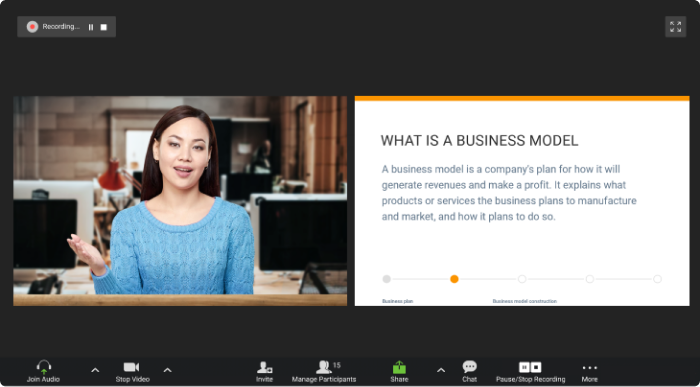
Conduct interactive webinars directly through iSpring Learn’s Zoom integration.
Tip 3: Offer learning certification
Learning certification programs are a great way to recognize personal achievement. They can also become an important differentiator for career advancement.
With iSpring Learn, you can set the parameters for any kind of certification program. Once a learner completes all program activities, the LMS will automatically issue a certificate bearing the learner’s name. You can even customize a certificate with your proprietary branding and upload your template to iSpring Learn.
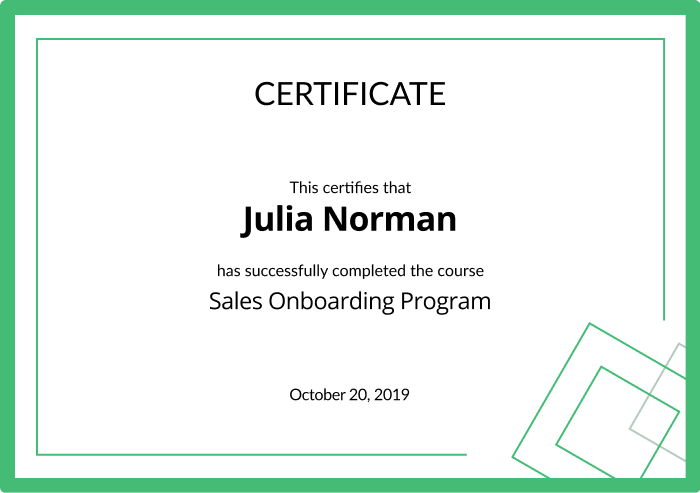
An example of a course completion certificate
Tip 4: Build a blend of different learning experiences
Today’s learners expect their training programs to be more than training sessions and tests. When building your curriculum maps, consider how you can use different content types to engage your learners. Use iSpring Suite to include elements such as:
- A short video to welcome your learners.
- Job aids and manuals in the form of e-books.
- An interactive game to assess learners’ baseline competency level.
- An eLearning module or lecture.
- A tutorial with a step-by-step demonstration of a process or procedure.
- A hands-on activity, game or skills demonstration.
- A final assessment.
Tip 5: Make learning a game
The idea of “gamifying” learning has been a hot topic among instructional designers for some time now. A well-crafted gamified training experience challenges learners through engagement and interactions.
Check our article on eLearning training activities and games to learn more about ways to enhance your corporate training programs.
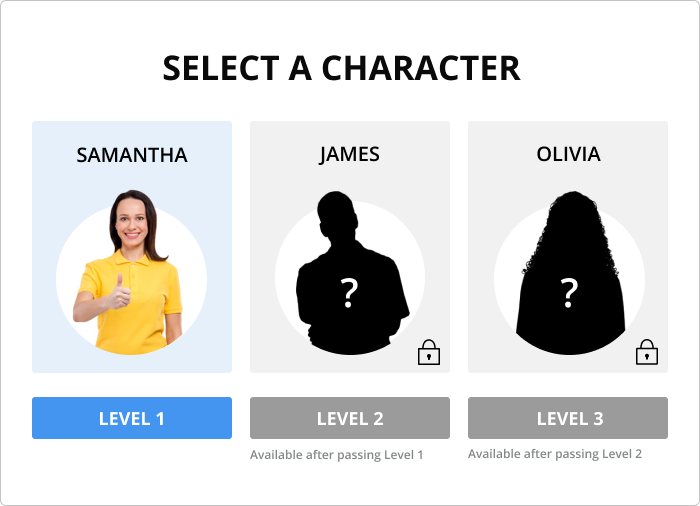
Enhance your learning content with easy-to-create games.
iSpring Suite can turn your existing PowerPoint training presentation into games with customized questions and interactions.
Tip 6: Practice your employees’ communication skills
This is especially important if you’re going to train customer service and sales teams. With iSpring Suite, you can create realistic conversation simulations with branching, assessments, real-life characters, and locations.
Also read: Retail Employees Sales Training – How to Move It Online
This is what a dialogue simulation looks like:
Managing the Cost of Online Corporate Training Programs
Implementing an online learning strategy will require an initial investment.
What’s the pricing model for LMS services?
LMS providers typically price their product in one of five ways:
- Pay-per-learner: a fixed price for a fixed number of learners.
- Pay-per-active-learner: a fixed price for the number of learners who use the LMS during a billing cycle.
- Pay-as-you-go: pay only for the features you use.
- Subscription: a set price, based on the number of features selected.
- Open source: free access to the LMS; you are responsible for setting up, customizing, and hosting the learning management system.
The following chart provides some general pricing guidelines.
| If… | Then… |
| The size of your learning audience is fairly stable. | A pay-per-learner plan could make sense. |
| Your learning audience is smaller than your total employee headcount. | Consider a pay-per-active-learner approach. |
| You don’t expect to use a lot of advanced LMS features. | Try a pay-as-you-go cost model. |
| Your organization has strong IT capabilities. | You may be able to customize free open-source software, such as Moodle. |
For a detailed analysis of how to choose the best LMS pricing for your organization, read our LMS Pricing Guide.
How to reduce the cost of an LMS
LMS providers offer an almost endless array of capabilities and training options. A new LMS customer can usually save money by purchasing only the services they know they’ll use during their first year and by closely monitoring the size of their learning audience.
Have a plan (or at least an outline of ideas) for how you’ll roll out online learning to your learners. Decide which pricing model makes the best financial sense for your organization, then approach LMS providers to discuss how their products can serve your needs. Ask each provider:
- When (or how often) can I change the pricing plan?
- What are the baseline costs of your pricing model?
- Do you charge set-up fees for new customers?
- What kind of training or customer support do you offer?
What Differentiates a Successful Corporate Training Program from a Failed One?
When your corporate training program is up and running, you can evaluate its success and decide what to improve.
The success of a corporate training program is not determined by completion rates alone. A corporate training program is considered successful when it:
- Achieves predetermined business objectives.
- Meets or exceeds ROI targets.
- Shows measurable improvement in employee job performance.
- Demonstrates positive behavior change.
- Supports career development goals.
- Contributes to organizational growth.
3 Trends in Corporate Training for 2025
We reviewed 3 reports on 2025 industry trends; here are the key takeaways.
GenAI in corporate training
As GenAI transforms the workforce, companies should focus on integrating AI tools into corporate training processes while developing employees’ AI skills.
GenAI enables personalized, adaptive learning paths that can keep pace with rapid technological change, making a training program more effective and relevant. By embedding AI into learning and development, organizations can optimize skill development, improve employee engagement, and drive business innovation.
To maximize the benefits of GenAI for a business, employees across all functions need foundational AI skills, with more advanced training tailored to specific job roles like marketing, HR, technical, and sales teams.
What can you start doing right away?
- Offer training programs focused on both using AI tools and understanding ethical considerations.
- Use AI to create dynamic learning experiences that adapt to each employee’s skill level and development needs.
Skill-based approach
The corporate training landscape is shifting toward a skills-based approach, emphasizing skills development and validation over traditional competency models.
Organizations adopting a skills-first approach, also known as Skills-Based Organizations (SBOs), are seeing measurable benefits, including increased productivity, innovation, employee engagement, and adaptability. According to Udemy Business’ 2025 Global Learning & Skills Trends Report 403, SBOs are 107% more likely to place talent in the organization effectively.
What can you start doing today to become such an organization?
- Embed skills development into daily workflows to foster continuous learning.
- Leverage AI and analytics to pinpoint skill gaps and measure progress.
- Align learning initiatives with strategic business goals to drive both employee growth and organizational success.
Leadership training to engage Gen Z
As Generation Z makes up 58% of the employees by 2030, the C-suite should navigate the challenges of multigenerational team management. Integrating Gen Z while retaining skills from retiring Baby Boomers and reskilling mid-career employees requires effective leadership.
Communication gaps across generations often lead to misunderstandings and exclusion, negatively impacting morale and productivity. Leaders must prioritize inclusive cultures and open communication to engage and retain talent from all generations.
What can you start doing today?
- Train leaders on communication styles and promote inclusive dialogue to reduce generational misunderstandings.
- Align DEI programs with Gen Z’s values and foster a culture of diversity and inclusion.
- Train leaders to create flexible work environments that respect Gen Z’s desire for work-life balance.
- Establish mentorship programs that pair experienced employees with Gen Z workers for mutual learning and knowledge transfer.
The Bottom Line
We hope this article has answered most of your questions about corporate training. If you still have any questions, please add them in the comment section below, and we’ll be happy to help you find an answer.
